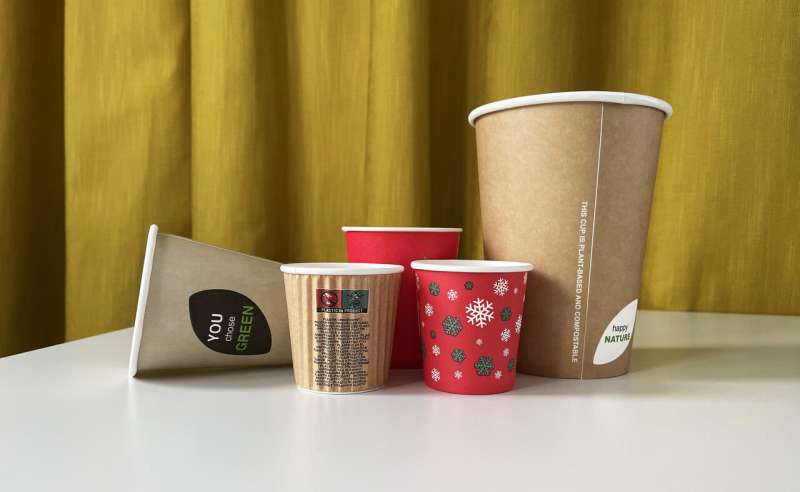This article has been reviewed according to Science X's editorial process and policies. Editors have highlighted the following attributes while ensuring the content's credibility:
fact-checked
peer-reviewed publication
trusted source
proofread
Study shows paper cups are just as toxic to aquatic midge larvae as plastic cups

Reports of plastics pollution contaminating all parts of the Earth and in all living things has accelerated a shift to alternative materials. The coffee latte you take with you from the kiosk on the corner now comes in paper cups, sometimes even with paper lids. But that cup can also harm living organisms if it ends up in nature.
Researchers at the University of Gothenburg show this in a study testing the effect of disposable cups made of different materials on the larvae of the butterfly mosquito.
"We left paper cups and plastic cups in wet sediment and water for a few weeks and followed how the leached chemicals affected the larvae. All of the mugs negatively affected the growth of mosquito larvae," says Bethanie Carney Almroth, Professor of Environmental Science at the Department of Biology and Environmental Science at the University of Gothenburg.
A thin plastic film lines paper cups
Paper is neither fat nor water resistant, so paper that is used in food packaging material needs to be treated with a surface coating. This plastic protects the paper from the coffee in your hand.
Nowadays, the plastic film is often made of polylactide, PLA, a type of bioplastic. Bioplastics are produced from renewable resources (PLA is commonly produced from corn, cassava or sugarcane) rather than fossil-fuels as is the case for 99% of plastics on the market today. PLA is often regarded as biodegradable, meaning that it can break down faster than oil-based plastics under the right conditions, but the researchers' study shows that it can still be toxic.
"Bioplastics does not break down effectively when they end up in the environment, in water. There may be a risk that the plastic remains in nature and resulting microplastics can be ingested by animals and humans, just as other plastics do. Bioplastics contain at least as many chemicals as conventional plastic," says Bethanie Carney Almroth.
Potential health hazard of food packaging
"Some chemicals in plastics are known to be toxic, others we lack knowledge about. Paper packaging also presents a potential health hazard compared to other materials, and it's becoming more common. We are exposed to the plastics and the associated chemicals via contact with food."
Bethanie Carney Almroth and her research colleagues report their results in an article in Environmental Pollution. In the article, they reason about the major shifts that are required to mitigate the continuing damage to the environment and threat to our health caused by the plastics pollution crisis.
"When disposable products arrived on the market after the Second World War, large campaigns were conducted to teach people to throw the products away, it was unnatural to us! Now we need to shift back and move away from disposable life styles. It is better if you bring your own mug when buying take away coffee. Or by all means, take a few minutes, sit down and drink your coffee from a porcelain mug," says Bethanie Carney Almroth.
Binding agreements to reduce plastic use
Right now, work is underway through the UN where the world's countries are negotiating a binding agreement to end the spread of plastics in society and nature. Professor Carney Almroth is a member of a council of scientists, SCEPT—Scientists Coalition for an Effective Plastics Treaty, which contributes scientific evidence to the negotiations. The council calls for a rapid phasing out of unnecessary and problematic plastics, as well as vigilance to avoid replacing one bad product with another.
"We at SCEPT are calling for transparency requirements within the plastics industry that forces a clear reporting of what chemicals all products contain, much like in the pharmaceutical industry. But the main goal of our work is to minimize plastic production," says Bethanie Carney Almroth.
More information: Bethanie Carney Almroth et al, Single-use take-away cups of paper are as toxic to aquatic midge larvae as plastic cups, Environmental Pollution (2023). DOI: 10.1016/j.envpol.2023.121836
Journal information: Environmental Pollution
Provided by University of Gothenburg





















